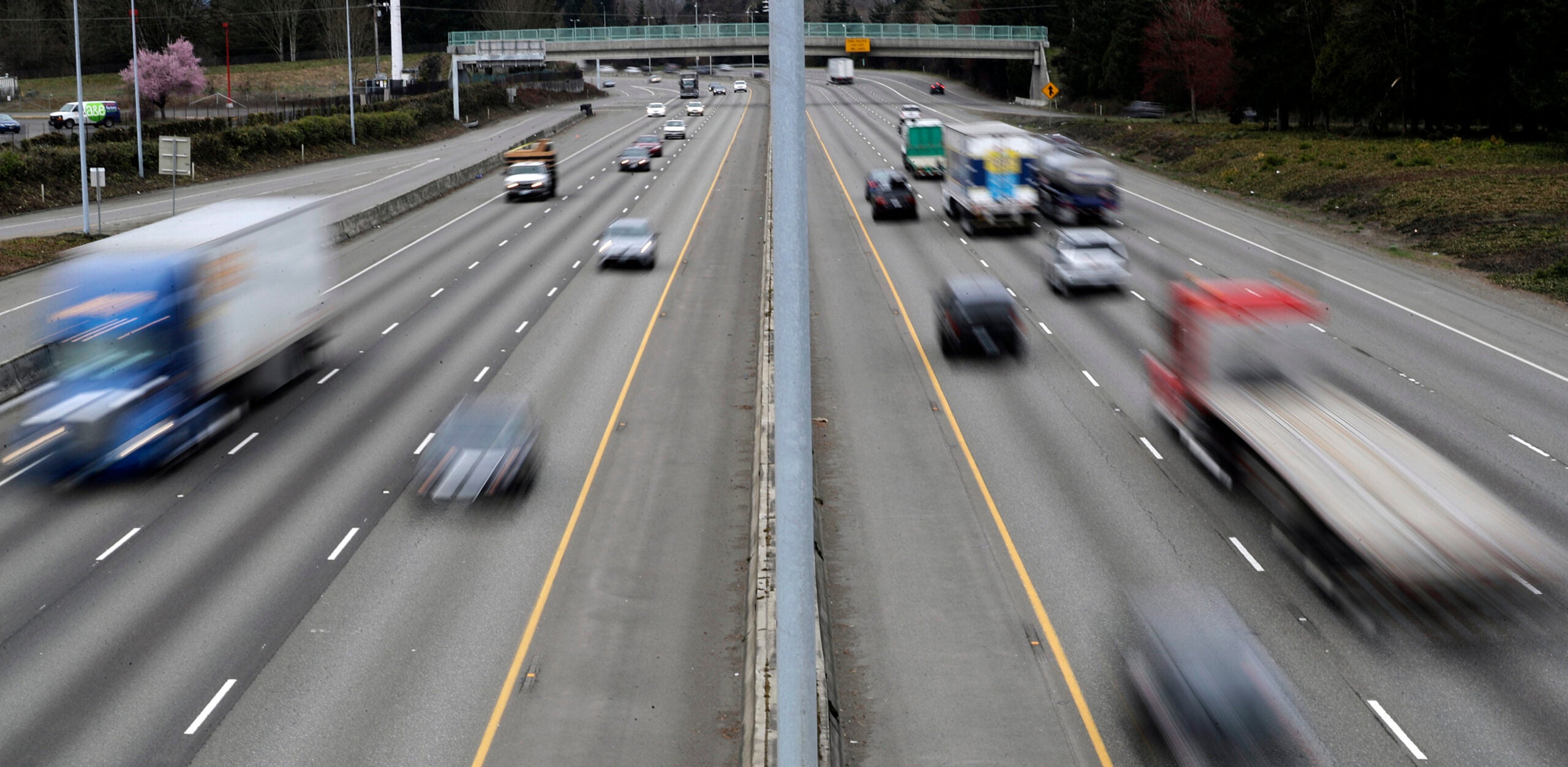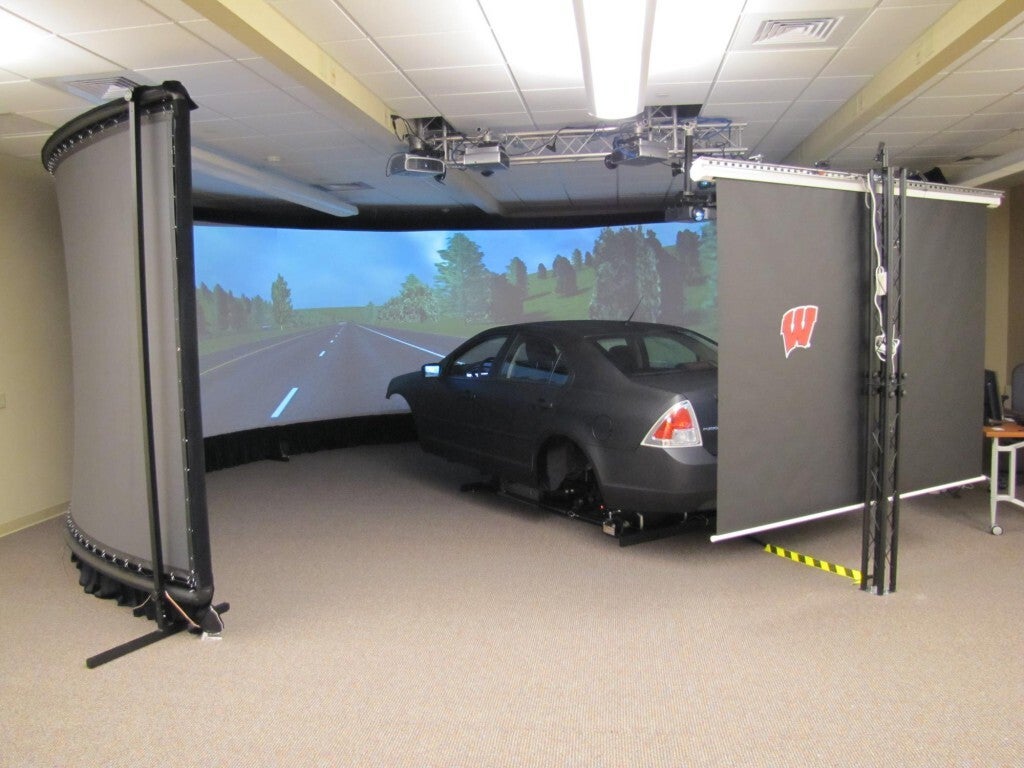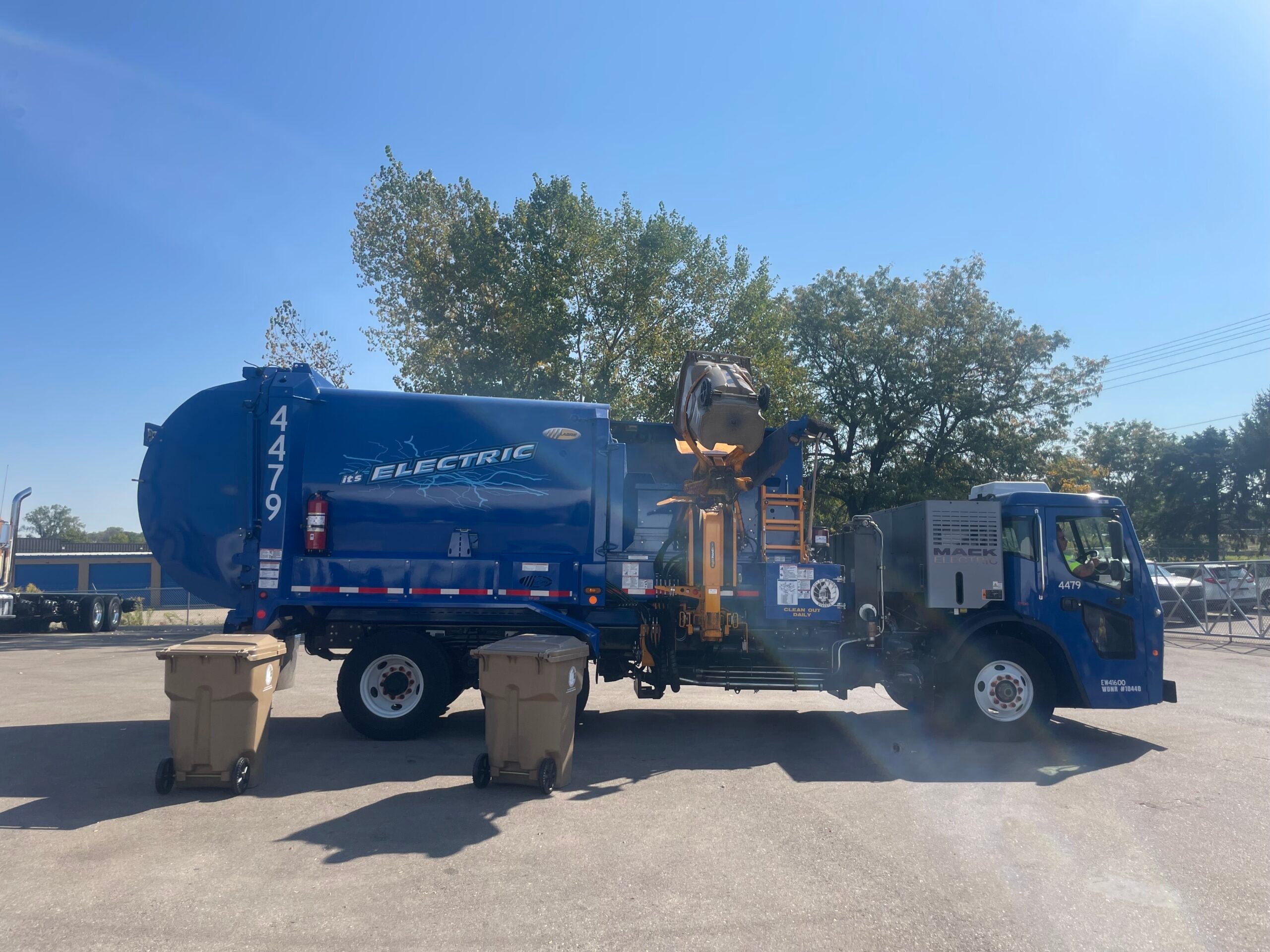Who swoops in when a self-driving semi-truck needs help? Many years from now, it could be a remote driver.
Researchers at the University of Wisconsin-Madison are studying what needs to happen for a person to remotely operate long-haul trucks that are otherwise autonomous.
“The vehicle operates on its own until it needs you,” said lead researcher David Noyce. “And then when it needs you, it calls you and says, ‘Can you get on the joystick here, and have control of the vehicle? Because I don’t understand what to do.’”
Stay informed on the latest news
Sign up for WPR’s email newsletter.
The research is part of a larger effort at the U.S. National Science Foundation to study what work could look like in the age of automation.
The project at UW-Madison brings together researchers from different engineering departments to solve problems that might arise when a self-driving truck needs help from a human. For example, cellular dead zones and lag time between a truck and the remote driver at a control center could disrupt their connection.
Tony McDonald, an associate professor of industrial and systems engineering, said truck drivers are able to feel and anticipate things on the road. In order to mimic that in the technology world, there are still things to overcome.
That means figuring out how to compensate for delays. The team is also looking at how to minimize screen fatigue and motion sickness so a remote driver could safely operate the vehicle from miles away.
“What might look to you, as a driver, like a small correction in the steering would be translated into a pattern of steering behavior,” McDonald said. “Half a second of control for a human would get then translated into a couple seconds of driving for the truck.”
Ultimately, McDonald hopes to make roads safer.
“Automation doesn’t get fatigued, doesn’t get distracted,” McDonald said. “And in that way, it could solve many of those issues.”
Automated long-haul trucking is already being piloted by companies in Texas. But, McDonald said there are problems, like weather, that need to be addressed before the effort goes international. Still, he said the technology is improving daily.
“I wouldn’t be surprised to see this grow quite a bit in scale in the next, like 15 to 20 years or so,” he said.
Noyce, who also serves as the executive associate dean in the College of Engineering, said other motivations behind their research are creating more remote job opportunities, increasing the supply of drivers and the amount of hours a truck can be on the road.
“For those who may not have found trucking as a desirable profession, if you make it more of an office-based, different color collar or however you want to describe it, would there be more people interested in joining this industry?” Noyce said.
He said he hopes to make the industry more inclusive by offering an alternative to the nomadic, days-long commutes of long-haul truckers. He said another part of their research is studying the societal and economic impact of automation.
Union rep: No replacement for a human operator on the open road
But some long-haul truckers are wary of automation.
“Automation is something that we’ve been dealing with for a long time now, across a lot of industries,” said Bill Carroll, president of Teamsters Joint Council 39, who helps run local unions that represent some long-haul truckers in Wisconsin. “From our perspective, this is an effort to reduce labor costs, obviously. Through automation.”
Union representatives say a better way to make the trucking industry more inclusive would be to pay workers more and offer competitive benefits. They don’t think automation is inevitable.
“This idea that it’s inevitable, it’s coming, that isn’t what we’ve seen in practice,” said Matt McQuaid, a communications representative for the International Brotherhood of Teamsters.
Carroll said there’s no replacement for a human operator on the open road, especially in an emergency.
“If something catastrophic happens, and there’s nobody around to actually see what happened — it’s much better having somebody behind that wheel,” Carroll said.
Noyce said remote trucking wouldn’t necessarily replace jobs, but it would open the industry to people who don’t want to spend long stints away from home.
He added that while there may be no replacement for a human behind the wheel today, there could be someday.
“What we’re really trying to do is take the first step here in exploring this technology and saying, ‘Can we make this work? And the answer, I think, is yes,’” Noyce said.
Wisconsin Public Radio, © Copyright 2025, Board of Regents of the University of Wisconsin System and Wisconsin Educational Communications Board.





